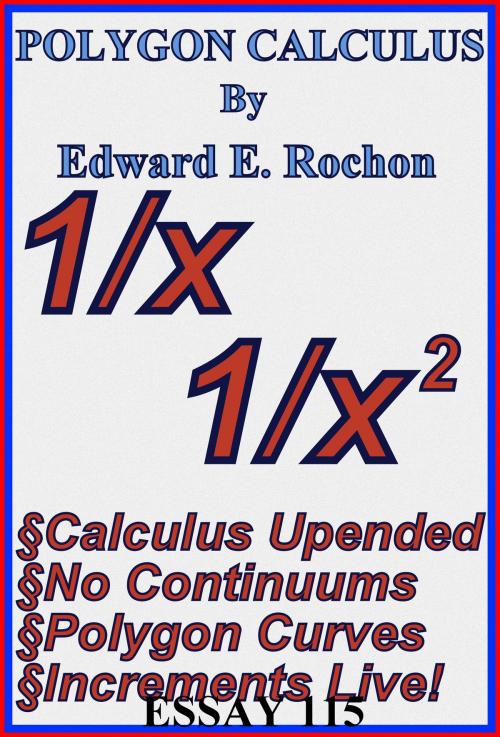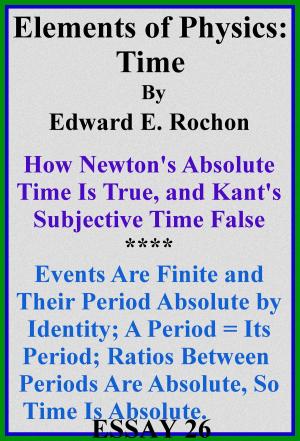| Author: | Edward E. Rochon | ISBN: | 9781370723096 |
| Publisher: | Edward E. Rochon | Publication: | November 25, 2016 |
| Imprint: | Smashwords Edition | Language: | English |
| Author: | Edward E. Rochon |
| ISBN: | 9781370723096 |
| Publisher: | Edward E. Rochon |
| Publication: | November 25, 2016 |
| Imprint: | Smashwords Edition |
| Language: | English |
A preface states my intent, apologizes for errors in past work and my method of working. Chapter 1 starts with the equations for the improper integrals for (1/x) and (1/x2)[sq of x]. The lines supposedly project to infinity, but one has an infinite area and the other of 1. This is clearly false. Assuming an infinite progression of any quantity, you would have an infinite summation. I attack the number line continuum as contradictory and untrue. Without increments between numbers, all points on the line would be the same point. I show division of infinity is impossible, as well as any mathematical operations upon it. Chapter 2 shows that curves cannot be continuums, a continuous progression of a curve. They are all partial polygons. It is the parallel line that is sacrosanct by logic, contrary to what the math shamans maintain. I explain that equations not only have limits in their domains, but the equation itself is limited by its parameters. In the case of approaching asymptotes, the equation either falls short and runs parallel to the axis (so called infinite area), or runs parallel to the axis, or crosses the axis (definite area.) In all three cases, the equation domain is no longer within the equation limits. Parallel lines, whether falling short of or parallel to axes, are no longer approaching an asymptote. The equation is outside of its parameters. If the curve crosses the axis, it moves away from the axis and no longer within the equation limits. The domain must cease at these finite limits. We see that calculus is not a true math, but a souped up statistical analysis. Chapter 3 says my original intent was to lay the foundation of polygon or incremental calculus, but stopped short for reasons explained briefly in the preface and here. I encourage readers to check out related essays by me and thank them for their interest, and encourage experts and those with avocations to pursue where I have left off.
A preface states my intent, apologizes for errors in past work and my method of working. Chapter 1 starts with the equations for the improper integrals for (1/x) and (1/x2)[sq of x]. The lines supposedly project to infinity, but one has an infinite area and the other of 1. This is clearly false. Assuming an infinite progression of any quantity, you would have an infinite summation. I attack the number line continuum as contradictory and untrue. Without increments between numbers, all points on the line would be the same point. I show division of infinity is impossible, as well as any mathematical operations upon it. Chapter 2 shows that curves cannot be continuums, a continuous progression of a curve. They are all partial polygons. It is the parallel line that is sacrosanct by logic, contrary to what the math shamans maintain. I explain that equations not only have limits in their domains, but the equation itself is limited by its parameters. In the case of approaching asymptotes, the equation either falls short and runs parallel to the axis (so called infinite area), or runs parallel to the axis, or crosses the axis (definite area.) In all three cases, the equation domain is no longer within the equation limits. Parallel lines, whether falling short of or parallel to axes, are no longer approaching an asymptote. The equation is outside of its parameters. If the curve crosses the axis, it moves away from the axis and no longer within the equation limits. The domain must cease at these finite limits. We see that calculus is not a true math, but a souped up statistical analysis. Chapter 3 says my original intent was to lay the foundation of polygon or incremental calculus, but stopped short for reasons explained briefly in the preface and here. I encourage readers to check out related essays by me and thank them for their interest, and encourage experts and those with avocations to pursue where I have left off.















